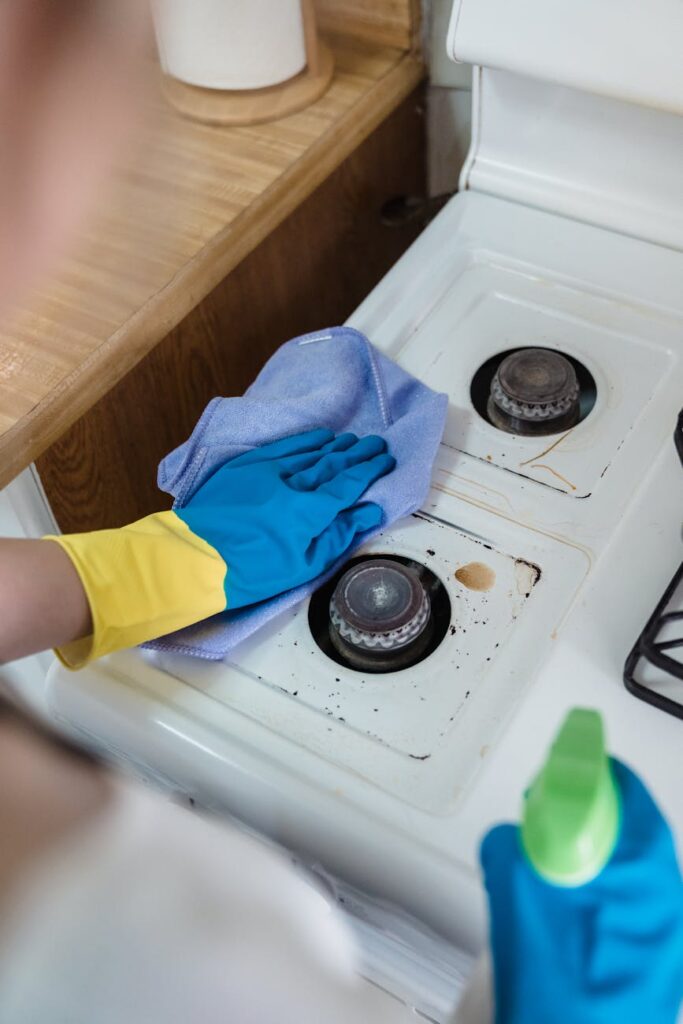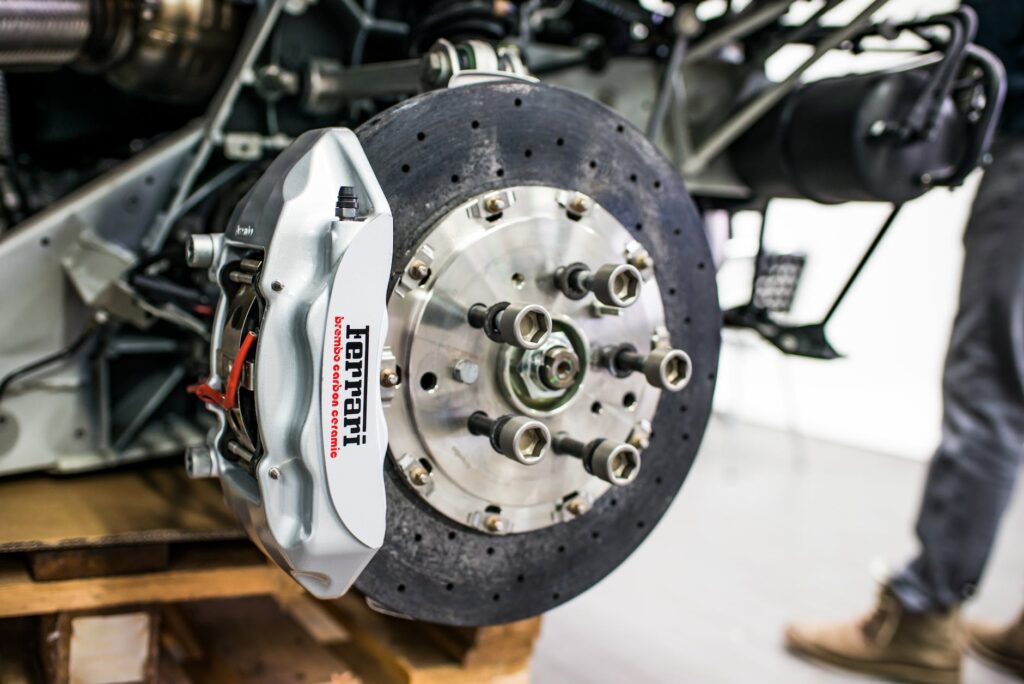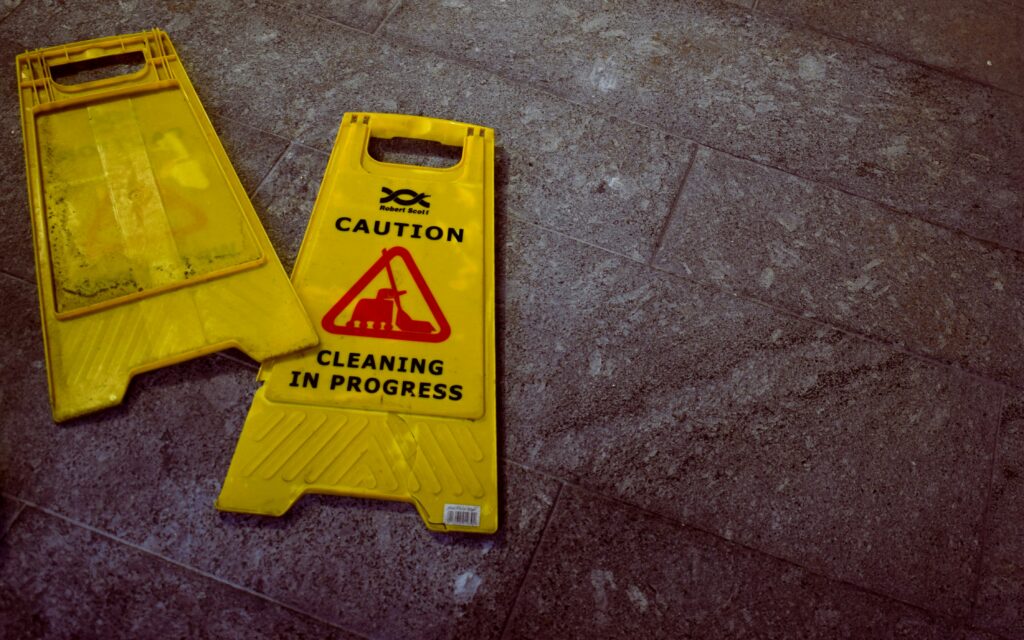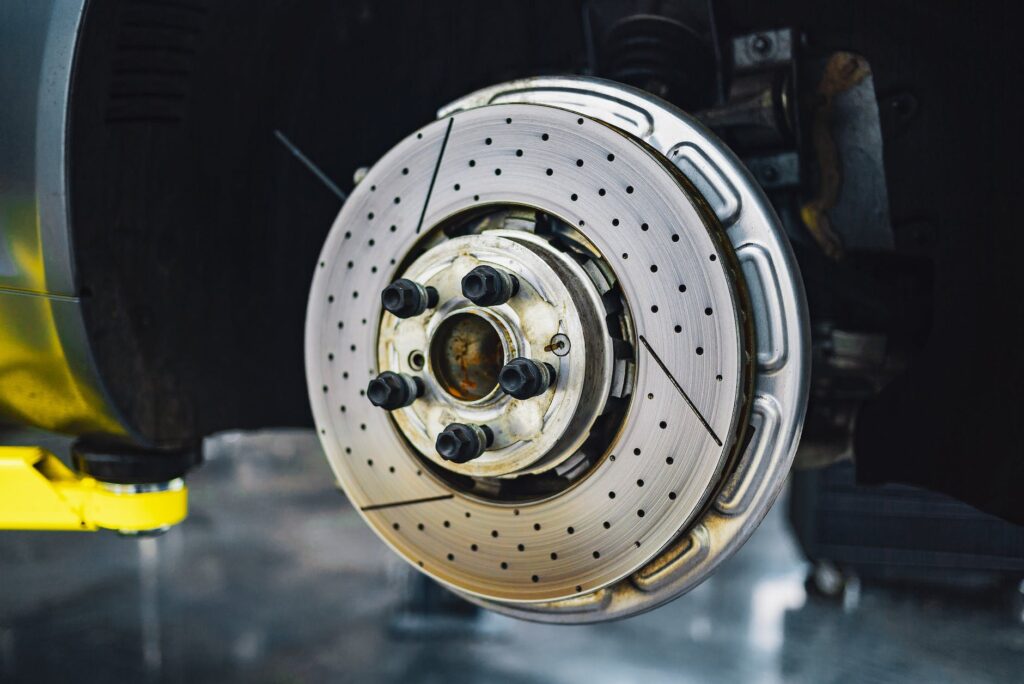Contents
Understanding Squeaky Brakes
Maintaining proper brake performance is crucial for the safety and functionality of your vehicle. One common issue that many vehicle owners encounter is squeaky brakes. Understanding the importance of brake maintenance and the causes of squeaky brakes can help you address the issue effectively.
Importance of Brake Maintenance
Brakes are the most important safety feature of a car, requiring regular service due to frequent use. Proper brake maintenance helps ensure optimal performance and promotes safe driving (Jiffy Lube). Neglecting brake maintenance can lead to decreased braking efficiency, increased stopping distances, and potential safety hazards on the road.
Regular cleaning of your car brakes is an essential part of brake maintenance. This process helps remove built-up brake dust, road grime, and other contaminants that can accumulate on the brake components over time. By keeping your brakes clean, you help to maintain their efficiency and prolong the life of the brake components, ultimately enhancing the overall braking performance of your vehicle (Bell Engineering).
Causes of Squeaky Brakes
Squeaky brakes can be a frustrating problem, but understanding the underlying causes can help you address the issue. One common cause of squeaky brakes is the accumulation of brake dust and debris on the brake pads. When the brake pads come into contact with the rotor, the dust and debris can cause friction, resulting in a squeaking sound. Additionally, worn-out brake pads or improper brake pad installation can also contribute to brake squealing (Bell Engineering).
It’s important to note that squeaky brakes can also be an indication of other issues, such as worn-out brake rotors, caliper problems, or insufficient lubrication. If you are unsure about the cause of the squeaking noise or if the noise persists after cleaning the brakes, it is recommended to have your vehicle inspected by a qualified mechanic.
By understanding the importance of brake maintenance and the causes of squeaky brakes, you can take the necessary steps to ensure the optimal performance and longevity of your vehicle’s braking system. Regularly cleaning your car brakes without removing the tires can be an effective way to address squeaky brakes and maintain their performance. In the following sections, we will explore different methods and safety considerations for cleaning car brakes without tire removal.
Cleaning Car Brakes without Removing Tires
Maintaining clean and well-functioning car brakes is essential for safe and efficient driving. Fortunately, it is possible to clean car brakes without the need to remove the tires. Below, we will explore three effective methods to achieve this.
Method 1: Bucket and Brush Technique
One method to clean car brakes without taking tires off is to use a bucket and brush to scrub the calipers and carriers effectively. This approach can be helpful in maintaining the brakes and preventing premature wear and tear (Garage Journal).
To use this technique, follow these steps:
- Prepare a bucket of warm soapy water. Use a mild detergent or brake cleaner solution for optimum cleaning.
- Dip a stiff-bristle brush into the soapy water and gently scrub the calipers and carriers. Pay attention to hard-to-reach areas and remove any accumulated dirt, brake dust, or grime.
- Rinse the calipers and carriers with clean water to remove any remaining residue.
- Dry the components thoroughly using a clean cloth or compressed air.
- Inspect the brake pads for wear and replace them if necessary.
- Reassemble the components and ensure everything is securely fastened.
Method 2: Using Brake Cleaner Spray
Another effective method to clean car brakes without removing tires is by using a brake cleaner spray and a wire brush. This technique allows for a more targeted and thorough cleaning process.
Follow these steps to clean your brakes using this method:
- Turn the wheels all the way left or right to gain access to the brake components (Bell Engineering).
- Apply a brake cleaner spray with an extended nozzle to reach between the caliper and wheel. This will help flush out brake dust effectively (Bell Engineering).
- Allow the brake cleaner spray to penetrate the brake components for a few minutes.
- Use a wire brush to scrub the calipers, carriers, and other brake parts to remove any built-up dirt or debris.
- Wipe away any remaining residue using a clean cloth.
- Inspect the brake pads for wear and replace them if necessary.
- Reassemble the components, ensuring all connections are secure.
Method 3: Soaking Brake Pads
For a more thorough cleaning of brake pads, soaking them in cleaner can be an effective approach. This method helps remove debris and grime, ensuring smooth brake performance without tire removal (Bell Engineering).
To clean brake pads using this technique:
- Remove the brake pads from the caliper assembly.
- Immerse the brake pads in a container filled with brake cleaner or an appropriate cleaning solution.
- Allow the pads to soak for five to ten minutes to loosen and dissolve any accumulated dirt or brake dust.
- Use a soft brush or cloth to gently scrub the pads and remove any remaining residue.
- Rinse the brake pads with clean water to ensure all cleaner is removed.
- Dry the pads thoroughly using a clean cloth or compressed air.
- Inspect the brake pads for wear and replace them if necessary.
- Reinstall the brake pads into the caliper assembly.
By utilizing these methods, you can effectively clean your car brakes without the need to remove the tires. Remember to prioritize safety and thoroughness when performing brake maintenance, and always follow the manufacturer’s recommendations for cleaning products and procedures. For more information on brake cleaning and other related topics, check out our article on brake squeal spray without removing wheel.
Tools and Preparations
Before diving into the process of cleaning car brakes without removing tires, it’s important to gather the necessary tools and make the appropriate preparations. By having the right equipment and taking certain precautions, you can ensure a smooth and effective cleaning process.
Necessary Tools for Cleaning Brakes
To clean your car brakes without removing the tires, you will need the following tools:
Brake cleaner spray: Opt for a high-quality brake cleaner spray that is specifically designed for brake maintenance. This spray helps to remove brake dust, grime, and other contaminants from the brake components. It is recommended to use a brake cleaner spray with an extended nozzle to reach between the caliper and wheel, flushing out brake dust effectively.
Wire brush: A wire brush is essential for scrubbing and cleaning the brake components. It helps to remove stubborn debris and rust from the calipers, rotors, and pads. Look for a wire brush with sturdy bristles that can withstand the pressure applied during cleaning.
Gloves and safety glasses: It is crucial to protect your hands and eyes during the brake cleaning process. Wear gloves to shield your hands from the chemicals in the brake cleaner spray and the dirt on the brake components. Safety glasses provide eye protection from any debris that may dislodge during the cleaning process.
Shop towels or lint-free cloths: Have a supply of shop towels or lint-free cloths available to wipe down the brake components after cleaning. These towels should be absorbent and non-abrasive to prevent damage to the brake surfaces.
Preparing the Vehicle for Brake Cleaning
Before you begin cleaning the brakes, take the following preparations:
Ensure safety and stability: Park your vehicle on a flat surface and engage the parking brake to prevent any accidental movement. Safety is paramount during brake maintenance, so make sure the vehicle is secure.
Loosen lug nuts: Before lifting the vehicle, use a lug wrench to loosen the lug nuts on the wheel you will be working on. Loosening the lug nuts slightly will make it easier to remove the wheel later in the process.
Lift the vehicle: Use a hydraulic jack or car lift to raise the vehicle off the ground. Refer to your vehicle’s owner’s manual for the proper lifting points and instructions. Once the vehicle is lifted, place jack stands under the frame or axle to support its weight securely.
Remove the wheel for brake access: With the vehicle lifted and supported on jack stands, fully remove the lug nuts and carefully take off the wheel. This will provide access to the brake components, allowing for thorough cleaning.
By gathering the necessary tools and making the proper preparations, you are ready to embark on the process of cleaning your car brakes without removing the tires. Following the step-by-step guide and adhering to the safety considerations will help you maintain optimal brake performance and ensure the safety of your vehicle.
Step-by-Step Guide to Cleaning Brakes without Tire Removal
To effectively clean your car brakes without removing the tires, follow these step-by-step instructions. It’s important to ensure your vehicle is securely lifted and follow safety guidelines throughout the process.
Step 1: Loosening Lug Nuts and Lifting the Vehicle
Begin by loosening the lug nuts on the wheel with the brakes you want to clean. This will make it easier to remove the wheel once the vehicle is lifted. Use an appropriate wrench or socket to loosen the lug nuts, but do not remove them completely.
Next, use a jack to lift the vehicle. Place the jack in the designated lifting points recommended by the vehicle manufacturer. Once the vehicle is raised, secure it with jack stands for added stability and safety. This ensures that the vehicle is properly supported during the brake cleaning process. Refer to your vehicle’s owner’s manual for specific instructions on lifting and securing your vehicle.
Step 2: Removing the Wheel for Brake Access
With the vehicle lifted and secured, you can now remove the wheel to gain access to the brakes. Completely unscrew and remove the lug nuts, then carefully slide the wheel off the wheel hub. Place the wheel aside in a safe location, making sure it is stable and cannot roll away.
It’s important to exercise caution when working on the brakes while the wheels are off. Avoid putting excessive weight or pressure on any brake components and be mindful of any brake lines or wires that may be in close proximity.
Step 3: Wire Brush Cleaning and Brake Inspection
Before applying any cleaning agents, use a wire brush to remove loose debris and dirt from the brake components. Be thorough in cleaning all parts of the brake assembly that are exposed with the wheel removed. This includes the brake caliper, rotor, and pads. Gently scrub the surfaces to loosen and remove any accumulated grime.
Once you have cleaned the brakes with a wire brush, it’s time to inspect the brake components for any signs of damage or wear. Check for any uneven wear patterns, excessive brake pad or rotor wear, or any other abnormalities. It is crucial to identify and address any issues before putting the wheel back on and lowering the vehicle.
Regularly cleaning your brakes without tire removal helps maintain braking efficiency and prolongs the life of brake components, promoting safe driving. For alternative methods and additional tips on brake cleaning, check out our article on best spray for squeaky brakes.
Remember to consult your vehicle’s owner’s manual for specific instructions and safety precautions related to your particular make and model.
Safety Considerations
When cleaning car brakes without removing the tires, it’s important to prioritize safety at all times. Adhering to proper safety guidelines and conducting a thorough inspection of brake components are crucial for maintaining a safe and reliable braking system.
Safety Guidelines for Brake Cleaning
Work in a Well-Ventilated Area: Brake cleaning often involves the use of chemicals, such as brake cleaner sprays. It’s important to work in a well-ventilated area or outdoors to avoid inhaling potentially harmful fumes.
Wear Protective Gear: Protect yourself by wearing appropriate safety gear, including gloves and safety glasses. Gloves help prevent skin contact with chemicals and potential injuries, while safety glasses shield your eyes from debris during the cleaning process.
Use Brake Cleaner Properly: When using brake cleaner spray, follow the manufacturer’s instructions carefully. Avoid spraying the cleaner directly onto brake rotors to prevent damage. Instead, focus on the brake pads, calipers, and other brake components.
Prevent Chemical Contact: Take precautions to prevent brake cleaner or other cleaning solutions from coming into contact with rubber components, such as brake hoses or seals. Chemicals can potentially degrade rubber, leading to leaks or other issues (will brake cleaner damage rubber).
Secure the Vehicle: Before starting any work, ensure that the vehicle is properly secured. Use jack stands or wheel chocks to prevent the vehicle from rolling or shifting during the cleaning process.
Importance of Brake Component Inspection
After cleaning the brakes, it is essential to conduct a thorough inspection of the brake components. This inspection allows you to identify any signs of damage or wear that may require further attention. Some key areas to inspect include:
Brake Pads: Check the thickness of the brake pads. Worn-out brake pads should be replaced promptly to maintain optimal braking performance (brakes squeaking but pads are good?).
Brake Rotors: Inspect the brake rotors for any signs of warping, scoring, or uneven wear. Damaged rotors may need resurfacing or replacement to ensure smooth and effective braking.
Brake Calipers: Look for any leaks, corrosion, or sticking in the brake calipers. Proper functioning of the calipers is crucial for even brake pad wear and consistent braking performance (how to clean brake calipers without removing them).
Brake Lines: Check the brake lines for any signs of damage or leaks. Damaged brake lines can compromise the brake fluid pressure and should be repaired or replaced as necessary.
By conducting a thorough brake component inspection, you can address any potential issues before they escalate, ensuring the safety and performance of your vehicle’s braking system.
Remember, if you are unsure about any aspect of brake cleaning or brake maintenance, it is best to consult a professional mechanic. They have the expertise and experience to address any concerns and provide appropriate guidance to maintain the safety and performance of your vehicle’s brakes.
Cleaning Car Brakes without Removing Tires
To maintain optimal brake performance and address the issue of squeaky brakes, it is essential to clean the brake components regularly. While traditional methods require removing the tires to access the brakes, there are techniques available to clean car brakes without taking tires off. These methods provide a convenient and effective way to clean and maintain the brakes, ensuring safety and longevity.
Method 1: Bucket and Brush Technique
One approach to clean car brakes without taking tires off is by using a bucket and brush to scrub the calipers and carriers effectively. This method involves the following steps:
- Prepare a bucket of warm soapy water using a mild detergent.
- With the vehicle parked on a level surface, turn the wheels to gain access to the brake components.
- Dip a brush into the soapy water and scrub the calipers and carriers, paying close attention to areas with visible dirt or brake dust.
- Use a brush with medium bristles to dislodge stubborn grime, ensuring thorough cleaning.
- Rinse the brake components with clean water to remove any remaining soap residue.
- Dry the brakes using a clean cloth or allow them to air dry.
The bucket and brush technique is a cost-effective way to clean car brakes without tire removal. It helps prevent premature wear and tear and ensures the proper functioning of the brakes. Remember to exercise caution while working around the brake components and avoid getting water or soap on other parts of the vehicle.
Method 2: Using Brake Cleaner Spray
Another effective method for cleaning car brakes without removing tires involves the use of a brake cleaner spray and a wire brush. Follow these steps:
- Turn the wheels all the way left or right to gain access to the brake components.
- Remove the caliper guide pins using the appropriate tools.
- Compress the caliper using a C-clamp or piston compressor, taking care not to damage the brake line.
- Place a wooden block or similar object between the caliper piston and rotor to protect the rotor surface.
- Spray the brake cleaner onto the caliper, rotor, and other brake components, ensuring thorough coverage.
- Use a wire brush to scrub away any visible dirt or brake dust. Pay particular attention to the caliper and rotor surfaces.
- Inspect the brake components for any signs of damage or excessive wear. Replace any worn-out parts as necessary.
- Reassemble the components, including the caliper guide pins, and ensure everything is securely tightened.
Using a brake cleaner spray along with a wire brush provides a convenient way to clean car brakes without tire removal. The extended nozzle of the spray enables reaching between the caliper and wheel, flushing out brake dust effectively. It is important to follow safety guidelines and use protective equipment, such as gloves and safety glasses, when working with brake cleaner sprays.
Method 3: Soaking Brake Pads
For thorough cleaning and maintenance of brake pads without removing tires, one can soak the brake pads in cleaner. This method helps remove debris and grime, ensuring smooth brake performance. Follow these steps:
- Remove the brake pads from the caliper assembly.
- Fill a container with an appropriate brake cleaner solution.
- Submerge the brake pads in the cleaner, ensuring they are fully immersed.
- Allow the pads to soak for five to ten minutes, allowing the cleaner to penetrate and loosen any built-up residue.
- Use a brush to gently scrub the brake pads, removing any remaining dirt or grime.
- Rinse the brake pads with clean water to remove any cleaner residue.
- Wipe the brake pads dry using a clean cloth or allow them to air dry completely.
- Reinstall the brake pads into the caliper assembly, ensuring proper alignment.
Soaking brake pads in cleaner is an effective method for deep cleaning without tire removal. It is important to use a brake cleaner solution suitable for the specific brake pad material and follow the manufacturer’s recommendations for cleaning and maintenance.
By utilizing these methods, vehicle owners can clean car brakes without removing tires, ensuring optimal brake performance and addressing issues such as squeaky brakes. Regular brake cleaning not only enhances safety but also prolongs the lifespan of brake components. Remember to prioritize safety, follow proper cleaning techniques, and consult a professional if needed.







